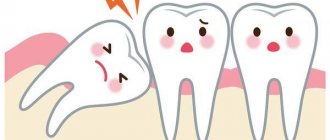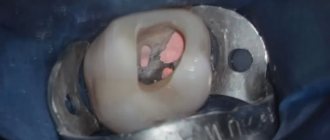Dental treatment under anesthesia has long been common practice in dental clinics. Painlessness of all therapeutic and restoration measures is an important criterion in modern dental practice.
However, the concept of general anesthesia is often confused with sedation , which is used in most cases for any corrective work to restore the dentition. The difference between sedation and general anesthesia is quite significant, which should be understood by every client of a dental clinic.
Important! Do not compare or identify two completely different technologies used for different types of treatment in different clinics. Calmly research the issue on the Internet. Don’t let yourself be outwitted, anesthesia and sedation are different in the drugs, depth of immersion and postoperative aftertaste of the procedure.
There are certain indications and a number of contraindications for general anesthesia in dentistry.
The essence of sedation is to eliminate psycho-emotional discomfort, fear of an unpleasant procedure, as well as to ensure complete relaxation and a mild form of sleep. When using this method, the patient partially retains consciousness, reaction to verbal stimuli, the ability to contact others and all physiological reflexes. Also, sedation does not exclude the use of local anesthetics, since its effect on pain practically does not apply, that is, it is likely only a slight increase in the pain threshold.
There are several types of medicinal sleep that are actively used in dentistry, namely:
- Fast and reliable . Intravenous sedation, characterized by a rapid onset of a calming effect with a duration of no more than 20-30 minutes, which is quite sufficient for most dental procedures of an invasive and non-invasive nature (for example, treatment of caries);
- Quickly and very briefly . Inhalation type of sedation is considered the simplest, most proven, safest and most suitable for dental treatment in all age categories, starting from children 3 years of age;
- It takes a long time to set in and is not suitable for everyone. Happy pills. The use of sedatives orally is used much less frequently due to the long-term onset of the necessary relaxation of the patient and not always obtaining the desired result.
All of the listed methods of putting a patient into artificial sleep are fundamentally different from the general anesthesia procedure in all respects. There is a fine line only between complete loss of consciousness and deep sedation, which is carried out according to a special algorithm and the same principle by an anesthesiologist in strictly defined conditions with the presence of special equipment and medications in case of any extension of the operation in time.
- Sedation - no need for intubation, light medications, quick way out of sleep - go home.
- Anesthesia - tests, drugs, hospitalization - one-day ward after surgery.
Concept of general anesthesia
General anesthesia also involves the professional actions of an anesthesiologist aimed at artificially introducing the patient into a state of deep sleep with the help of potent drugs used only in anesthesiology. At the same time, the activity of the central nervous system is reduced as much as possible, which is accompanied by a complete absence of pain, any reaction to irritating factors and partial elimination of reflexes. It could be a narcotic drug.
No matter how sad it may sound, at present, general anesthesia with mandatory hospitalization is now mainly carried out only in public clinics, motivated to retain the patient for several days to simulate statistics with a huge hospital load on “bed-days” and the formation of a bonus fund doctors, as these are the rules now.
However, time does not stand still and now a modern operating room in a specialized non-state dental clinic, which involves the use of general anesthesia in its work, is always provided with the following medical attributes:
- artificial lung ventilation device;
- availability of centralized oxygen supply;
- laryngoscopes, blades of various sizes and endotracheal tubes of all sizes;
- monitors for continuous monitoring of all vital signs, that is, blood pressure, heart rate and blood oxygen saturation (saturation);
- subclavian catheters and related accessories;
- defibrillator and never need it again;
- drugs to provide emergency assistance in the event of any acute situations, which is more likely during general anesthesia (adrenaline, atropine, refortan, stabizol, dopamine, mezaton);
- medical equipment that ensures comfortable work for the anesthesiologist (manipulation table, fluorescent lamp, infusion pump, disposable consumables, intravenous catheters, disposable systems in sufficient quantities).
Treatment under general anesthesia (anesthesia) - carried out only for special indications
Treatment under general anesthesia (Narcosis) is carried out only for special indications, when the risk justifies the result of a large-scale recovery process due to extensive surgery, a high degree of trauma and, accordingly, severe pain. For example, for jaw fractures, tumor removal. Sedation is safer.
Levin Dmitry Valerievich
Chief physician, Ph.D.
For minimally invasive dental procedures, local anesthetics are used for pain relief along with light sedation, which is the safest, does not require additional training and long-term restoration of all functions of the nervous system by our full-time neurologist.
Advantages
Of course, the main advantage of general anesthesia is the complete absence of any patient movements, which lengthen the operation and complicate the doctor’s actions. In addition to this fact, there are a number of other advantages of dental treatment in a completely unconscious position, that is, the following:
- relevant for super-traumatic procedures, the patient does not feel compression, vibrations or other tactile stimuli at all;
- absence of any pain after the procedure, which is due to the long residual presence of the drug in the blood;
- minimizing the risk of postoperative complications, since the doctor is not distracted by the patient’s reaction, which can be quite different if anesthesia or at least sedation is not used;
- decreased saliva production, which is ensured by special medications;
Despite all the advantages of general anesthesia, its use is indicated only in certain cases, in contrast to sedation, which is used at the request of the patient in the dental office, even when the procedure is minimally invasive.
Important! When performing sedation (not anesthesia), the anesthesiologist always ensures maximum psycho-emotional comfort, since he excludes specific micro-irritants from the child’s memory: white coats, smells of the dental operating room, noise effects, medical sounds and visual stimuli;
Under sedation, it is possible to perform any full-scale operation to restore the dentition (bone grafting, ENT surgery, implantation using sinus lift surgery, prosthetics).
Indications for general anesthesia
Some cases in practical surgery and dentistry are a direct indication for the use of general anesthesia during therapeutic procedures. However, even if they are available, the use of anesthesia raises many doubts and questions about the general health of the patient, which may have contraindications. To eliminate all risks, the patient undergoes a certain examination of the body, based on the results of which the doctor decides on the advisability of this type of anesthesia.
The following types of dental treatment can be performed under sedation or general anesthesia:
- extraction of 3 molars, which are located in the jaw bone in an extremely complex manner, which involves drilling and crushing tooth tissues and roots, which have a complex and tangled structure;
- bone grafting with immediate implantation;
- the need for prosthetics or implantation of several dental units;
- one-stage removal of several teeth;
- elimination and treatment of a large volume of carious lesions on the dental surface;
- injuries of the maxillofacial apparatus, requiring a large scale of restoration work;
- treatment of advanced forms of pulpitis or widespread periodontitis;
- surgeries on the temporomandibular joint;
- a burdened allergy history, which does not allow treatment with local anesthetics;
- the patient has a pronounced gag reflex;
- insurmountable fear of dental procedures, accompanied by characteristic sounds, smells and tactile sensations;
- the patient has severe mental illness (schizophrenia, mental retardation);
- children under 3 years of age, which is due to inadequate patient contact and the presence of a large volume of dental work;
- genetic pathologies (autism, Down syndrome);
- patients with somatic pathologies in a compensated state to prevent exacerbation, for example, hypertension or neurasthenia;
- epilepsy.
In cases of treatment in government institutions with a hospital, you will always be persuaded to undergo treatment under anesthesia followed by hospitalization, since this is strictly regulated by the internal regulations of hospitals.
In paid non-state clinics, all these types of treatment will be carried out only under sedation and without hospitalization, since there is no need to extend the stay and duration of treatment.
The list of indications is quite large, but it may have limitations. Whether it is possible to treat teeth under anesthesia in a particular case will be determined only by an experienced anesthesiologist, who must be on the staff of specialists in a modern dental clinic that provides comfortable and effective service.
How is dental treatment performed under anesthesia in adults?
How is dental treatment performed under anesthesia in dentistry? First, you need to come for a consultation at the clinic to discuss dental treatment under general anesthesia.
The duration of anesthesia is determined depending on the patient’s age, his state of health and the required amount of treatment. Throughout the operation, the patient's condition is monitored by an anesthesiologist. It controls the vital functions of all organs. Upon recovery from anesthesia, reflexes gradually begin to recover; this takes about five minutes, but the anesthesiologist continues to monitor the patient for some time. A person goes home, as a rule, accompanied by someone. Under no circumstances is it recommended to drive a car after anesthesia.
Contraindications
Even with the use of modern anesthesia, which is due to excellent tolerability, a minimal percentage of complications and side effects, general anesthesia has a number of strict contraindications. The need for a one-stage large-scale correction of the dentition can delay or even make the presence of severe pathologies or certain physiological conditions inaccessible.
Thus, the following situations are unconditional contraindications for general anesthesia in dentistry:
- severe pathologies of the cardiovascular system in the acute and subacute period (myocardial infarction, cardiomyopathy, cardiac arrhythmias of various etiologies, uncompensated heart failure);
- dysfunction of the respiratory system (bronchial asthma, pneumonia, chronic obstructive pulmonary disease in a severe clinical stage), which is characterized by complete or partial obstruction that disrupts normal breathing;
- acute cerebrovascular accidents;
- the presence of acute infectious diseases;
- pregnancy in the 1st and 3rd trimester;
- state of alcohol or drug intoxication;
- consuming food and drinks before the scheduled procedure;
- psychiatric diseases in the acute period.
Some contraindications can be considered relative, since they can be easily eliminated, which in the future will allow dental correction to be carried out in full and painlessly, thanks to the effects of general anesthesia. Recommendations for preparing for the upcoming operation will definitely be given by the anesthesiologist at the clinic where treatment and dental restoration are planned.
Pros and cons of tooth extraction under anesthesia
Modern dental anesthesia is of two types: intravenous anesthesia and inhalation anesthesia. Inhalation anesthesia means that the patient is put into a state of anesthesia using gaseous drugs supplied through a mask. It is considered safe, but in any case its duration should not exceed one and a half hours.
The service of treatment and removal of teeth under general anesthesia is now available in any clinic, so it is worth considering the pros and cons of using general anesthesia in dentistry. Let's start with the pros:
- Saving time . Under anesthesia, you can perform not only tooth extraction, but also treatment, prosthetics, repair of fillings - and all in one session.
- No pain or fear . Local anesthesia does not always work 100%, and patients experience discomfort during treatment. And local anesthesia certainly does not relieve the fear of treatment and tooth extraction; only anesthesia can cope with this.
- Reducing the risk of inflammation . The use of general anesthesia for treatment and tooth extraction helps reduce the risk of developing alveolitis.
- The best quality of hardening of filling materials . When a dentist performs treatment or extraction of teeth under general anesthesia, he may use drugs that block salivation, which improves the quality of hardening of the filling material. This means that the fillings will hold better.
Now let’s look at the disadvantages of treatment and tooth extraction under anesthesia:
- Risk of negative effects on the body . Of course, in modern clinics the risk of negative effects of anesthesia on the body is minimal, but it exists. Those who have ever received general anesthesia are familiar with the state of recovery from anesthesia: nausea, dizziness, nervous agitation. And this is for a healthy person, but for those who have bronchial asthma or suffer from shortness of breath, have had a heart attack, or are simply elderly, anesthesia is contraindicated.
- Time limit . The flip side of this advantage is its disadvantage: diseases such as pulpitis or complicated caries are best treated gradually, over several visits. If anesthesia is used, the doctor is obliged to solve the problem in one visit: perform pulp removal, root canal filling, select photopolymers for the filling and check the bite. Due to lack of time and lack of feedback from the patient, the dentist may make a mistake. The most common occurrence in such cases is underfilling of the root canals, which leads to complications and even tooth extraction.
For the reasons described above, teeth should be treated and removed under general anesthesia only when necessary and by an experienced dentist.
Purpose of general anesthesia in dentistry
General anesthesia is a rather complex and highly responsible intervention in the human body, and therefore requires fundamental knowledge and experience of a highly qualified specialist, modern technical and drug support, as well as appropriate hospital conditions.
All dental clinics that plan to conduct any types of treatment under anesthesia must have a license to provide these services. Ideally, general anesthesia should only be used in a hospital setting, with an intensive care unit or ward available in case of any complications.
The task of the anesthesiologist is to provide the following conditions to the patient:
- analgesia;
- amnesia;
- neurovegetative protection;
- the most convenient conditions for performing dental procedures that are invasive and traumatic.
The anesthesiologist's first priority is always maximum patient safety, avoiding complications and preventing the consequences of anesthesia. It should be remembered that general anesthesia is always associated with a certain percentage of risk, although in modern practice it is extremely small.
Types of anesthesia used in dental practice
The type of anesthesia that the anesthesiologist will choose depends on the scale and trauma of the planned dental operation. There are several ways to put the patient into a state of complete or partial loss of consciousness for the purpose of comfortable and painless correction of the dentition.
Depending on the specific situation, anesthesiologists use the following types of anesthesia:
- Combined endotracheal anesthesia is used in cases where extensive operations on the maxillofacial apparatus are planned or there is a threat of obstruction of the upper respiratory tract due to changes in the anatomical relationship of the tissues of the nasopharynx;
- The inhalation type provides peace of mind to the patient during a short and minimally invasive process of treatment and restoration of dental elements;
- Intravenous mononarcosis provides short-term anesthesia, but, if necessary, the effect can be extended;
- Combined or multicomponent injection of drugs into the bloodstream (total anesthesia) in order to provide an anesthetic barrier in time, for example, when a dentist performs bone grafting, implantation, or complex wisdom tooth extraction.
To the question of whether it is possible to treat teeth under general anesthesia, there is an exhaustive positive answer. Even if there are contraindications, the anesthesiologist will definitely find a way to make a visit to the dentist comfortable and painless. Most often in dentistry, a combined intravenous type of anesthesia is used, in which several drugs are administered in a certain sequence to achieve the safest and deepest drug-induced sleep, reduce the likelihood of side effects and prevent postoperative complications from the central nervous system.
In what cases is dental treatment performed under anesthesia in adults?
The problem of ordinary fear of the dentist does not require such a radical measure as anesthesia, but can be easily solved with the help of sedation. This is a gentle alternative to general anesthesia, in which the person is half asleep, physically and emotionally relaxed, and also does not retain memories of what happened. By the way, the vast majority of clinics, when offering dental treatment under anesthesia, still mean sedation. However, real “general anesthesia” with loss of consciousness is very often used in modern dental practice.
Meanwhile, the main dental interventions for which general anesthesia may be a better choice than local anesthesia are only complex maxillofacial operations, as well as a number of indications that are worth knowing about:
- allergy to local anesthetics;
- low pain threshold;
- large volume of required treatment;
- developed gag reflex;
- increased fear of dental treatment.
Complications after general anesthesia
Modern medications and technical equipment are at the highest level in anesthesiology, but there is always a risk of any complications, which patients should know, doctors should take into account and warn. Each human body is individual and, under certain conditions, unpredictable, so it is difficult to give a 100% guarantee of the successful completion of any surgical operation that was accompanied by general anesthesia.
In the practice of anesthesiologists, the following types of complications are encountered, which, in most cases, are noted during the recovery of consciousness after using a drug for anesthesia:
- dizziness, nausea, vomiting;
- psychomotor agitation and confusion;
- severe headache;
- trembling throughout the body;
- muscle pain (back, neck, limbs);
- severe allergic reactions;
- injury to the tongue, lips or teeth (usually characteristic of endotracheal anesthesia);
- infection of the lower respiratory tract, which occurs due to incorrect tracheal intubation;
- fluctuations in basic vital signs (blood pressure, pulse, saturation).
There is also a rate of severe brain damage and mortality, which necessitates the presence of resuscitation equipment and appropriate medications. Informed patients must make their own decision about whether to treat their teeth under general anesthesia , since the doctor cannot guarantee absolute well-being. The best prevention of these excesses is considered to be thorough preparation of the patient, exclusion of contraindications and compliance with all doctor’s recommendations. Modern anesthesia in dentistry reduces the rate of complications to a minimum.
Important! None of these types of anesthesia are used in our clinic, only sedation.
Important! Establishing, licensing and maintaining a full-fledged anesthesiology department requires huge monthly costs.
People usually criticize and dissuade from performing sedation only in those clinics where Rospotrebnadzor issued a refusal and failed to obtain accreditation for this type of licensing.
General anesthesia in dentistry
If you don’t delve too deeply into medical terminology, then anesthesia (this term already means general anesthesia of the body, so saying “general anesthesia” is incorrect) is, in fact, an artificially induced reversible condition in which a person is unconscious and has no reaction. for pain. Depending on the type and depth of anesthesia, it can be with spontaneous breathing or with artificial ventilation. The second option requires tracheal intubation (a special tube is inserted into the airway, usually after the patient falls asleep) or the use of other methods that allow air to be blown into the lungs, for example, a laryngeal mask. In dentistry, in the vast majority of cases, spontaneous breathing anesthesia is used.
General anesthesia in dentistry has several stages, which are important for us to consider in order to understand how deep it can be when performing dental treatment under anesthesia.
Analgesia
The analgesia stage begins a few minutes after the drug is administered to the body. With medication, consciousness is switched off, speech becomes incoherent, drowsiness appears, and pain sensitivity is lost. At the same time, breathing, pulse and pressure change little.
Excitation
The stage is characterized by motor and speech restlessness. Reflex activity and muscle tone are increased, the pupils are dilated and respond well to light, breathing is irregular. At this stage, no manipulations are carried out; it is only a transitional moment for immersion in deeper sleep.
Surgical stage
It begins from the moment the excitation ceases and rhythmic breathing is established without visible pauses. The surgical stage is divided into four more types of depth of anesthesia: superficial, light, complete and ultra-deep. With superficial or light general anesthesia, implantation, sinus lifting, treatment, and tooth extraction under anesthesia are performed. Serious maxillofacial operations are performed in deep cases.
Thus, for each type of dental treatment, depending on the degree of trauma and duration, a certain stage and depth of anesthesia is required.










